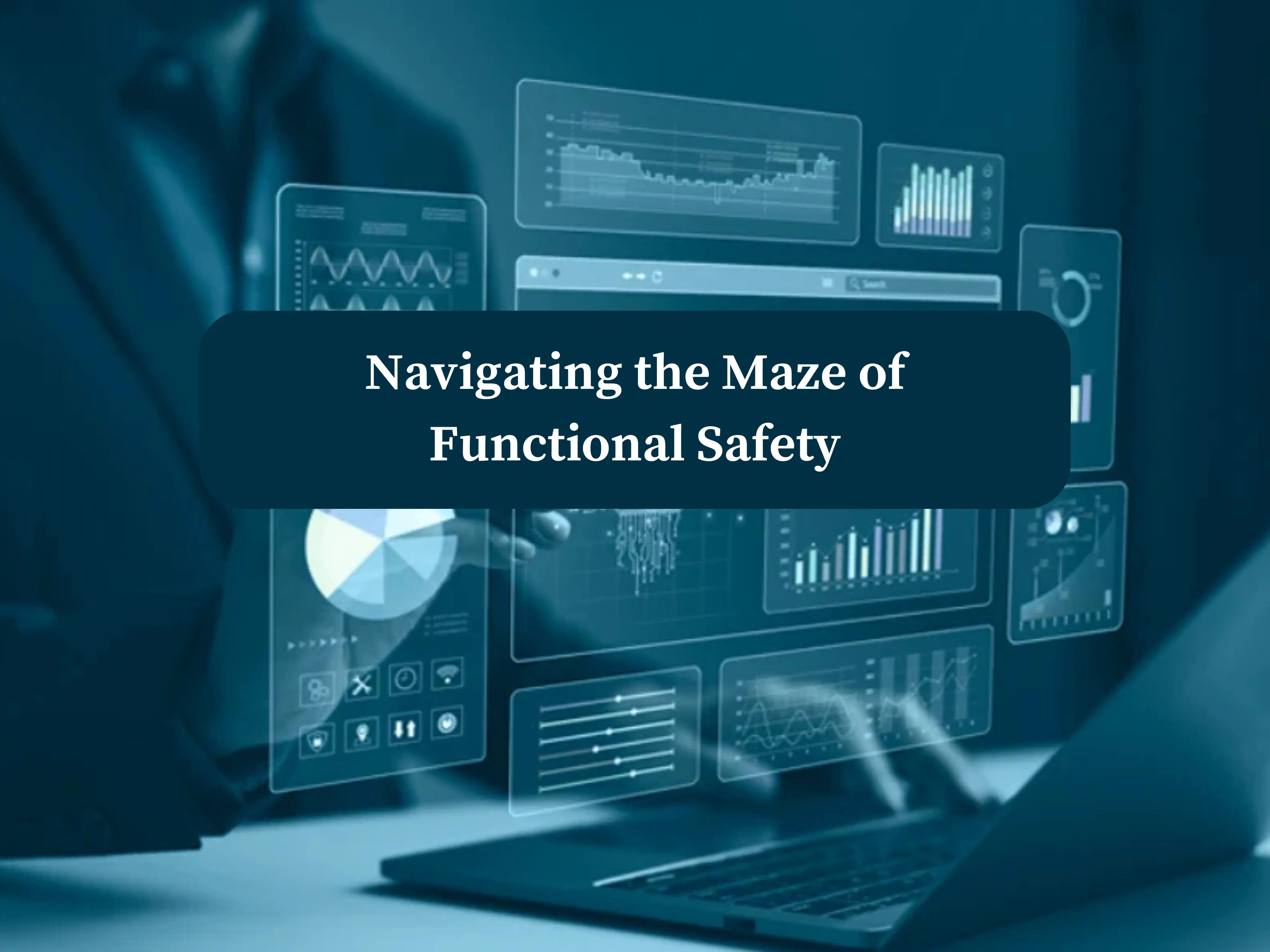Understanding Requirements and Traceability
Safety requirements start with identifying potential hazards and assessing associated risks during the Hazard Analysis and Risk Assessment (HARA). From there, we establish safety goals to mitigate or eliminate these risks. Think of it as creating a safety net for your system, ensuring nothing falls through the cracks. These safety goals help derive specific requirements by providing clear objectives that guide the development of detailed safety measures. Each requirement is then implemented and rigorously verified and validated through testing, inspection, and other techniques to ensure they effectively address the identified risks. By systematically addressing each potential hazard, safety goals act as a comprehensive safety net, ensuring that all potential hazards are addressed and that the system operates safely without any critical issues being missed. This structured approach ensures that the system is robust, reliable, and compliant with safety standards.
Safety requirements are derived from these goals using techniques like Fault Tree Analysis (FTA) and Failure Modes and Effects Analysis (FMEA) which provide a detailed understanding of potential hazards and failure modes. The safety requirements are then derived to specifically address these identified hazards and failure modes. When drafting safety requirements, consider the following elements within a system that could potentially be a source of malfunction leading to a hazardous situation and that specific safety requirements can be generated:
Sensors: Ensure they prevent faulty information.
Controller: Make sure it can detect and control faults.
Actuator: Ensure it can detect and control hazardous output or actuator faults.
Safe State and Degraded States: Define what constitutes a safe state and possible degraded states.
User Warning: Include requirements for user warnings in case of faults.
Recovery from Faults: Specify how the system should recover from faults.
These requirements must be traced to the respective hazards and failure modes ensuring that each requirement is purposeful and addresses a specific risk, thereby creating a comprehensive safety net for the system. These requirements must be clearly defined and documented carried through into the system’s architecture, design, and coding. Each step in the development process ensures that the requirements are met, validating that the system adheres to safety standards.
What Makes a Good Requirement?
Good requirements are the foundation of a successful project. They should be:
Atomic: Each requirement should be a single, standalone statement.
Testable: You should be able to verify that the requirement has been met through testing or inspection.
Clear and Unambiguous: Requirements should be written in a way that leaves no room for interpretation.
Consistent: Requirements should not conflict with one another.
Complete: All necessary information should be included.
Traceable: Each requirement should be traceable to its source and to the corresponding implementation.
Why Requirements and Traceability Matter
Requirements and traceability are crucial for several reasons:
Ensuring Compliance: Adhering to standards like IEC 61508 ensures that your system meets industry safety requirements, which is essential for regulatory compliance.
Improving Quality: Clear requirements and traceability help in identifying and addressing potential issues early in the development process, leading to higher quality and more reliable systems.
Facilitating Communication: Well-documented requirements clearly specify what needs to be true, ensuring all stakeholders understand the project goals and constraints. Traceability ensures that no requirements are left untested or uncovered, maintaining a clear link between requirements and their corresponding tests or implementations.
Enhancing Maintainability: Traceability makes it easier to manage changes and updates to the system, as you can quickly see how a change in one requirement affects other parts of the system.
The Role of IEC 61508 in Ensuring Safety
IEC 61508 emphasizes the need for bidirectional traceability. This means every requirement should be traceable to its implementation and vice versa. This traceability ensures all requirements are addressed, helps in verifying and validating the system, and prevents unnecessary code that could introduce safety risks.
Tools for Managing Requirements and Traceability
While you can use Excel for simple projects, it can quickly become a nightmare as complexity grows. Requirement management tools are designed to handle this complexity efficiently. These tools offer features like:
Centralized Requirement Repository: Keep all your requirements in one place, easily accessible and manageable.
Traceability Matrices: Automatically generate and maintain traceability matrices to ensure all requirements are linked to their implementations.
Change Management: Track changes to requirements and their impacts on the system.
Collaboration: Facilitate communication and collaboration among team members.
Popular tools include IBM Rational DOORS, Jama Connect, and Polarion. These tools help streamline the process, reduce errors, and ensure that all requirements are met and traceable throughout the project lifecycle.
How Can This Help You?
Implementing robust requirements and traceability processes can significantly benefit your projects:
Risk Reduction: By ensuring all safety requirements are met and traceable, you reduce the risk of safety incidents and system failures.
Efficiency Gains: Clear requirements and traceability streamline the development process, making it easier to track progress and manage changes.
Customer Trust: Demonstrating a commitment to safety and quality through rigorous requirements and traceability can enhance your reputation and build trust with customers and stakeholders.
Why Traceability Matters Figure 1 shows how safety requirements at different sub-phases of development are related, linking safety analyses to architectural elements and verifying safety requirements or design. This traceability schema strengthens the safety case, ensuring that every aspect of the system is accounted for and meets the necessary safety standards.

In essence, traceability is like having a GPS for your safety requirements—it guides you through the development process, ensuring you don’t miss any critical steps and helps you navigate back if you ever get lost.
